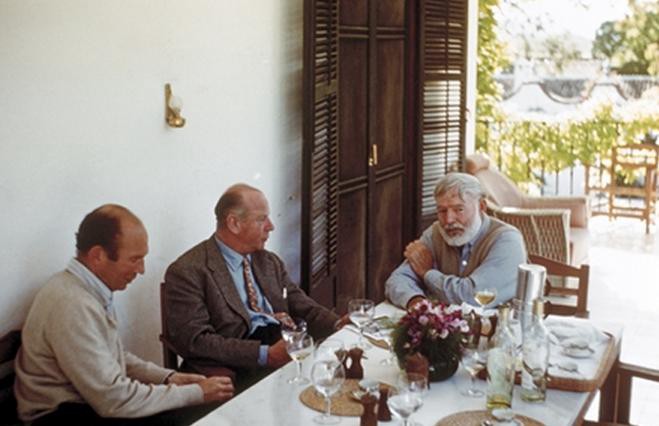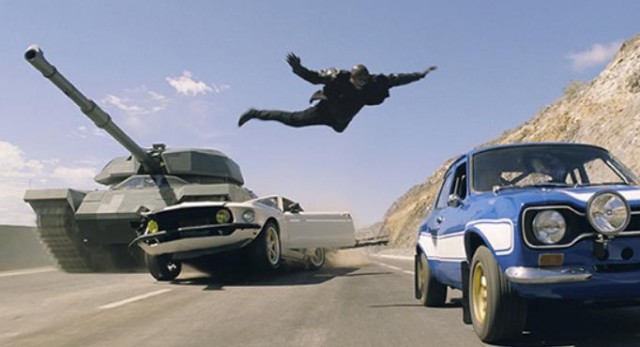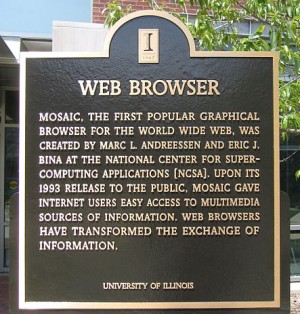Would You Like To Own This Wacky Telegram From Ernest Hemingway?

In the summer of 1959, Ernest Hemingway lit out for Spain on assignment. He was to write a long article about a series of bullfights between the country’s finest matadors, Antonio Ordóñez and Louis Miguel Dominguin.1 But on the northern side of the Mediterranean Sea, a single commission from Life swelled into a three-part series, during a long summer that would prove to be his last hurrah.
Hemingway formed his own cuadrilla in Málaga, and invited 19-year-old Valerie Danby-Smith to join.2 Val, as he called her, had been sent to interview him for the Irish Times. He rarely entertained requests from journalists at that point, but she had charmed him, and it was a summer of exceptions.3 His fourth wife, Mary Hemingway, had been surprised when he accepted an invitation to stay at La Consula, the home wealthy American expats Bill and Annie Davis. The Hemingways hardly knew them, and for wont of independence, they usually booked their own houses or hotels. For their part, the couple offered up the whole of their resources on Andalusia without reserve, and yet they rarely imposed their position as hosts, happily following Hemingway’s lead.
The Davises did insist upon, however, telegrams over phones, and the one above is currently for sale. Admirers of the Nobel and Pulitzer Prize winning author — who have at least $1,400 to spare — can purchase the Spanish telegram this spring from Alexander Historical Auctions.

Nathan “Bill” Davis on left; the producer Hercules Rupert Bellville in the middle; Hemingway on the right, lunching at La Consula.
Hemingway appears to be a considerate guest in the telegram, alerting his hosts that he and Val were out on an evening stroll, and would likely return in an hour. While Hemingway addressed his hostess as “Miss Annie,” he invoked his nickname for Bill. According to Alexander Historical Auctions, Hemingway called his host “my litter slave” because he allowed the writer “unfettered access to his considerable assets.” Val confirmed this in her own memoir, as well as multiple interviews, adding that the nickname had as much to do with what Hemingway decided were his “physical attributes” as well as his submissiveness.
Ernest called him ‘negro’ the whole time, because he had very thick lips and he felt he had this sort of Negroid… you know? So that was almost like using him as a servant, in a way. He drove the car… He was like the chauffeur, he was not so much the host. He let the Hemingways use their house as if it were their own house.
And use the house, they did. La Consula was the site of Hemingway’s legendary 60th birthday party. Mary Hemingway flew in champagne from Paris, Chinese food from London, and friends from all over the world, including the Maharaja of Cooch Behar, American diplomat David Bruce and wife Evangeline, and actress Lauren Bacall. The local Spanish aristocracy appeared en masse. Musicians played the Spanish guitar while couples danced the flamenco. Flashes of light and piercing noises prevailed, whether from the fireworks, the shooting range, or Hemingway’s own temper.4
Hemingway’s health was poor and he felt, for the first time, unable to exert control over his work. Those around him suffered greatly for it.5 He lashed out at General Charles Trueman “Buck” Lanham at the party, who had travelled all the way from Washington, D.C. to celebrate the man he fought alongside during War II. In a letter Hemingway wrote to A.E. Hotchner a few months after the party, he described life with Mary in arctic terms.6 The cuadrilla knew to tread lightly.
The year that followed the telegram was likely his worst. Life insisted the Spanish bullfighters article, “The Dangerous Summer,” be no longer than 10,000 words. Hotchner came to Cuba to help, where he found Hemingway “unusually hesitant, disorganized, and confused.” When Fidel Castro declared he would nationalize property owned by foreign nationals, the Hemingways fled Cuba, stashing manuscripts and artwork in a Havana bank. He became ill and paranoid, convinced the FBI was monitoring his activity in New York and Idaho, and that he would never retrieve what he left behind in Cuba, some of which could have paid the money he owed on taxes. Under the name of his physician, he received electroconvulsive therapy no less than 15 times at the Mayo Clinic. Two days after he returned from Arizona, he walked down to the basement and unlocked the storeroom that held his guns, and brought two shells and twelve-gauge Boss shotgun up to the foyer. Like his father before him, and his sister and brother after, Hemingway took his own life.
Alexis Coe is now a writer living in San Francisco, but not long ago, she was a research curator at the New York Public Library. Her work has appeared in the Atlantic, Slate, The Millions, and other publications. Alexis holds an MA in history. Follow her.
1 Hemingway based the character Pedro Romero, the young bullfighter in The Sun Also Rises, on Ordóñez’s father, Cayetano. The elder Ordóñez began performing as a bullfighter in the ranches near La Palma, a shoe shop owned by his parents. Hemingway once said that Cayetano knew “everything that happened in the ring was true, and everything outside was fiction.” The Ordóñez family tradition is still alive; his great-grandsons Francisco and Cayetano Rivera two of the most famous matadors in Spain today.
2 In the world of bullfighting, the Spanish word cuadrilla includes the matador, and his team of banderilleros and picadors.
3 Hemingway was openly infatuated with the young journalist, but by most accounts, their relationship was believed to be a platonic one. Either way, Mary grew attached to Valerie, and would ask her stay on for years, sorting out the writer’s estate after his suicide. She eventually became a Hemingway herself, marrying their son, Gregory, though their union would end in divorce.
4 Hemingway’s volcanic temper was as well-known as his talent. He was a womanizer who drank to excess, an arrogant bully who was regularly estranged from his family members and old literary friends, including Gertrude Stein and F. Scott Fitzgerald. He dismissed Sinclair Lewis as a sloppy fraud.
5 Under the heat of the Andalusia sun, Hemingway’s pages swelled to nearly 120,000 words. Hemingway’s morning writing routine is now well-known, but is worth pointing out it included a sedulous endpoint; he often criticized writers who “never learned how to say no to a typewriter.”
6 Hotchner was a journalist for the Air Force during WWII. He met Hemingway in 1948, and the two remained close until his death. He is best-known, however, for his 1966 biography on his friend, Papa Hemingway, but he went on to write King of the Hill, a memoir later adopted to the screen by Steven Soderberg, and later co-founded Newman’s Own with his neighbor, the actor Paul Newman.
Did You Mean "Expire"?
The 4,000-pound hexapod insect-mobile is “an entertainment vehicle,” according to it’s designer, Matt Denton, from Hampshire, U.K. “I hope it will inspire people,” he says. That is not quite my reaction.
Only 32 More Days Until "Fast & Furious 6"

There are movies again! The previews in the theaters right now are batting 100% in the “sure, I will see the f out of your expensive movie, even that weird one that’s about magicians that give away money by robbing banks through magic, whatever the heck that is, and however they got Mark Ruffalo in it, and also that weird movie about dead people being a post-mortem detective agency that is basically a ‘Men In Black’ reverse spin-off.” But! May 24th. That is when the most important cultural moment of our year takes place, when Fast & Furious 6 arrives. Can you believe there have only been six of these movies? It feels somehow like there are more. There have only been five Final Destination movies, after all. Forget Star Trek. Forget everything else (except Elysium, because, yes please). Is this too low-brow for you? Well then get out. You can enjoy staying home with “Rectify,” which, I do not believe the hype in the slightest. Sounds like garbage. Fast and Furious. Forget all your troubles. America. Beep beep. Cars.
A-Trak & Tommy Trash, "Tuna Melt"
Directed by Ryan Staake, the new A-Trak & Tommy Trash video distinguishes itself from OK Go’s “This Too Shall Pass” and other Rube-Goldberg-machine classics with its use of toast slices as dominoes and a thrilling underwater u-boat scene. It’s totally excellent. Also, if you have never heard the song that A-Trak made with Juicy J and Danny Brown last year, “Piss Test,” I encourage you to check it out.
Will YOU Explode Soon?
“The fertilizer plant explosion in West, Texas, on Wednesday, April 17, killed at least a dozen people and destroyed several blocks of the small town. Is your neighborhood next?”
Big Gay Lie Doxxed

“Most public health people think that the ends justify the means” is how Florida International University’s Bill Darrow explains why it was okay for Randy Shilts’ publisher to completely over-bake the idea of Gaëtan Dugas being the “Patient Zero” of HIV. Everyone at the time knew this wasn’t possibly a true idea, that one handsome flight attendant was responsible for hopping around the globe, spreading HIV. Yet the idea stuck. And apparently everyone is okay with it, and besides, he was dead anyway by 1984, and couldn’t sue for libel. But anyway, that’s actually not really how public health people think? Public health policy people are level-headed and statistics-oriented. They like nuance. They like facts.
The only bright side of this sordid bit of semi-news is that it comes from a new book called Plane Queer: Labor, Sexuality, and AIDS in the History of Male Flight Attendants, which is the SINGLE MOST 80s BOOK TITLE OF OUR TIME, but enjoyably so. For an academic text, it’s quite accessible and readable. Also it’s the gayest book of all time, because in his introduction, Phil Tiemeyer explains which of his army of ex-lovers is Dorothy, Blanche and Rose. He’s Dorothy. Of course you are. Anyway, yay, let’s all read it.
Song Referenced
This article about R.E.M.’s Mike Mills and his fondness for fantasy sports does so well up until the last sentence. WHY? There was no need to go there. Tsk etc.
Earth Day Sucks But Since It Exists Let's Watch Neil Young Play Electric Guitar
I am generally anti-holiday. I think it does us more harm than good to assign ourselves special days to do things or commemorate things at exactly the same time as everyone else is supposed to be doing them or commemorating them. I know the counter argument is like, “celebrating holidays is part of what binds us together as a society” or whatever. (Or, even better, “Shut up, Dave. And lighten up. And how about just think of someone besides yourself for once in your life and buy a goddamn gift.”) But I don’t like the way that holidays prescribe is a certain time to be doing certain things. I feel like we pay a price in the way that this lets us NOT do these things, many of them good and valuable (like, say buying a gift for someone spontaneously, if we just happen to see something that we think someone we know and love might like.) By establishing this one day of the year where we’re all supposed to care about the planet EXTRA SPECIAL EVEN MORE than usual, don’t we make it that much easier for ourselves to shrug off such concerns the rest of the time? Humans, busy as we are, don’t need any help in this regard. And, at the risk of sounding like an annoying hippie, dervishing in a drum circle, I would argue that the environment is a concern that we would really be better putting more energy and thought towards on a daily basis. (We won’t; we’ll probably choose to perish in flames instead.) But, so, Earth Day sucks really especially hard. But since it’s today, let’s celebrate with the coolest, least annoying hippie ever to dervish in a drum circle, Neil Young. Anyway, remember to recycle today. That will solve everything.
Memories Short
“It helps that the buying public has no long-term memory.”
— This sentence is about real estate in Brooklyn, but, really, it could be about anything.
Take An Internet Break To Learn This One Thing About A Popular Web Browser That Turns 20 Today...
Take An Internet Break To Learn This One Thing About A Popular Web Browser That Turns 20 Today [PHOTO]

“Mosaic, based on the work of Berners-Lee and the hypertext theorists before him, is generally recognized as the beginning of the web as it is now known. Mosaic, the first web browser to win over the Net masses, was released in 1993 and made freely accessible to the public. The adjective phenomenal, so often overused in this industry, is genuinely applicable to the… ‘explosion’ in the growth of the web after Mosaic appeared on the scene. Starting with next to nothing, the rates of the web growth (quoted in the press) hovering around tens of thousands of percent over ridiculously short periods of time were no real surprise.”
— Mosaic, the web browser credited with popularizing the World Wide Web, was released on this day in 1993. How did web browsers change the way we interact with information and each other? Tell us in the comments!
Photo by Ragib Hasan
